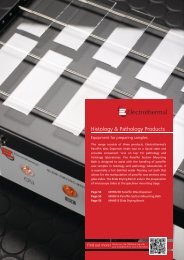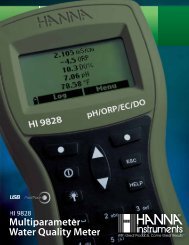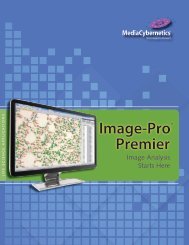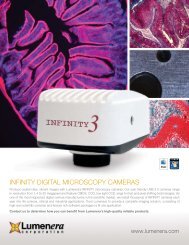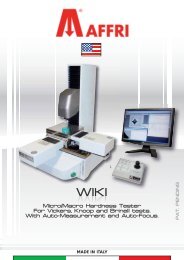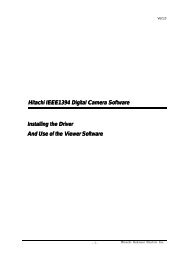INFINITY ANALYZE User's Manual - Spectra Services
INFINITY ANALYZE User's Manual - Spectra Services
INFINITY ANALYZE User's Manual - Spectra Services
- No tags were found...
Create successful ePaper yourself
Turn your PDF publications into a flip-book with our unique Google optimized e-Paper software.
Lumenera <strong>INFINITY</strong> <strong>ANALYZE</strong><br />
User’s <strong>Manual</strong> Release 6.0.0<br />
2.1.2 Raster Images and Vector Graphics<br />
The components that make up the scene on a computer screen fall into two main<br />
categories: raster images and vector graphics.<br />
Raster images use a grid of small squares, known as pixels, to represent pictures. Each<br />
pixel in a raster image has a specific location and color value assigned to it. When<br />
working with raster images, groups of pixels rather than objects or shapes are being<br />
edited. Because they can represent subtle gradations of shades and color, raster<br />
images are the most common electronic medium for continuous-tone pictures such as<br />
photomicrographs.<br />
The terms raster image and pixel array are used interchangeably in this document. In<br />
fact, a raster image may also be described as a matrix of points. The distance between<br />
neighbouring points on a row is referred to as the horizontal sampling interval. The<br />
distance between neighbouring points on a column is referred to as the vertical<br />
sampling interval. Sampling interval multiplied by the number of columns and rows is<br />
exactly the size of the field of view over which the image has been captured.<br />
Vector graphics consist of lines and curves defined by mathematical objects called<br />
vectors, which describe pictures according to their geometric characteristics. The lines<br />
or curves of an object can be painted with a specific color. The interior of the shape<br />
enclosed by these lines and curves may also be painted with a specific color. Vector<br />
graphics can have only a limited number of colors and cannot represent natural scenes.<br />
They are mainly useful in annotating raster images.<br />
Raster images are resolution-dependent, that is, they represent a fixed number of pixels<br />
and can appear jagged and lose detail if they are scaled on-screen, or if they are printed<br />
at a higher resolution than they were created for. On the other hand, vector graphics are<br />
resolution-independent; that is, they are defined by analytical formulas and so can be<br />
scaled arbitrarily to appear crisp and sharp on any output device at any resolution.<br />
<strong>INFINITY</strong> <strong>ANALYZE</strong> works with both raster images and vector graphics. The images<br />
obtained from cameras are raster images. The annotation objects created with<br />
<strong>INFINITY</strong> <strong>ANALYZE</strong> are vector graphics. In a broad sense, both raster images and<br />
vector graphics are considered digital images or digital pictures. Vector graphics are<br />
always converted to raster images for purpose of display, a process known as<br />
digitization. <strong>INFINITY</strong> <strong>ANALYZE</strong> can also burn vector graphics into raster images. This<br />
is the same as digitization but is irreversible.<br />
Page 14 Copyright © 2006-2011







